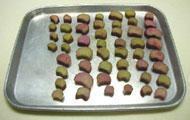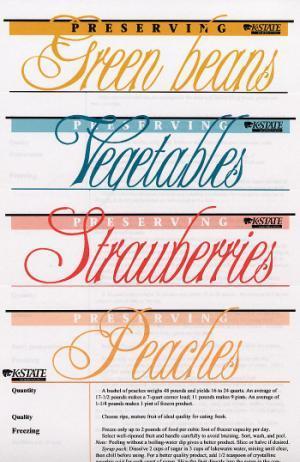Freezing
 Freezing Food is easy, convenient, and the least time-consuming food preservation method.
Freezing Food is easy, convenient, and the least time-consuming food preservation method.
Freezing does not kill bacteria, it only slows down the growth of bacteria and slows the enzyme activity which can affect the quality of the food. Freezing will affect the texture of any food because the water in the food expands and breaks cell walls. This results in softer products, especially in fruit. Quality is also affected by fluctuating temperatures during freezer storage. Foods may thaw slightly, then refreeze and ice crystals form on the package. For best storage, keep the freezer below 0oF.
How to Freeze Food
-
 Preserving Apples
Preserving Apples
- Preserving Cherries
- Preserving Cucumbers
- Preserving Green Beans
- Preserving Peaches
- Preserving Peppers
- Preserving Strawberries
- Preserving Sweet Corn
- Preserving Tomatoes
- Preserving Vegetables
Other Resources
- Freezing Convenience Foods - Oregon State University
- Freezing Fruit at Home- Purdue Extension
- Freezing Animal Products - University of Georgia
- Freezing Casseroles, Soups and Stews - University of Georgia
- Preserving Venison - University of Georgia
Did You Know?
Fruit must be treated to protect it from browning.
Freezer Storage Tips
- How Long to Store Frozen Foods
- Packaging and Labeling Foods
- Freezing Pointers
- Care of the freezer
- Freezer Management
- Thawing and Preparation
- Preparing for Power Outages
Don't Freeze These Foods!
While most foods freeze well, there are some foods that should not be frozen because the result is poor quality. Here's a list of those foods:
- Foods that do not Freeze Well - University of Georgia
Download Adobe Acrobat Reader to view many of our publications in PDF format.